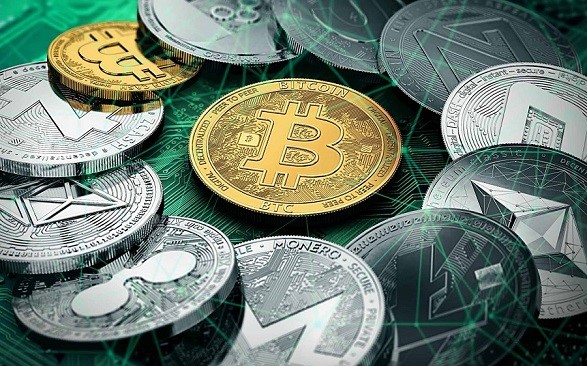The fourth bitcoin halving, which reduced miner rewards from 6.25 BTC to 3.125 BTC per block, took place successfully on April 19. Contrary to wide expectations, BTC and several altcoins have failed to post significant price gains in the past week since the halving. How long before the anticipated crypto market bull run set in? Paris-based blockchain firm Kaiko discussed this in a recent report, highlighting the key factors that will possibly drive demand in the crypto market over the coming months.
BTC performance after halving events
The first three bitcoin halvings have always culminated in a long-term price rally for BTC and the broader crypto market. While the pre-halving upsurge is usually mild, BTC and altcoins tend to gain at greater percentages post-halving.
Price Gains after 2012 Bitcoin Halving
Recall that after the 2012 halving, BTC experienced a modest 9% increase in the first month, followed by a significant surge of 167% two months later. Subsequently, it recorded a staggering 903% increase five months later, ultimately rallying over 8,220% one year after the event. This massive pump occurred because BTC was less widely traded and highly illiquid as of 2013. “Markets are prone to sharp moves when liquidity is thin,” Kaiko analyst Adam McCarthy wrote in the report.
Price Gains after 2016 Bitcoin Halving
Following the 2016 block reward slashing, the leading cryptocurrency plummeted about 9% and 4% in the first and third months after the event, respectively. However, BTC rallied 85% nine months later, gaining over 292% a year after the second halving.
Price Gains 2020 Bitcoin Halving
The third halving occurred in April 2020. One month after the event, BTC’s price only jumped by 10%. In the third month post-halving, its price grew by 33%. Meanwhile, the mega pumps came nine months and one year after the event, with gains of about 439% and 542%, respectively.
While the growth percentages differed, the leading cryptocurrency by market cap always reached a new all-time high nine months after each halving episode. Amid past performances, Kaiko’s McCarthy believes market outcomes may be different for the 2024 halving event.
Related:
Is the next bitcoin halving in 2024 going to be the magic wand for a bullish run?
Bitcoin’s fourth halving to have less impact on the crypto market
Stating that the fourth block reward slashing happened against a “significantly different backdrop than the previous three,” the crypto market analyst upheld that the 2024 bitcoin halving will have less impact on the crypto market.
According to the report, the most notable differences in market conditions in 2024 compared with the previous halvings comprise elevated transaction fees (miners fees), macroeconomic factors, liquidity, and prices.
It bears mentioning that fees earned by miners—for validating transactions and securing the Bitcoin network—have remained high since the latest halving. Moreover, the recently launched Runes protocol by Casey Rodarmor has increased demand for block space on the network, further boosting the fees earned by miners.
Following the development above, “the halving has typically been a selling event for Bitcoin miners as the process of creating new blocks incurs significant costs, forcing miners to sell to cover costs,” McCarthy wrote. He added that “miners are likely to accept lower prices as they rush to convert their bitcoin into cash to cover overheads.”
On the difference in macroeconomic factors, the analyst submitted that the fourth halving is the first to occur in a “high interest rate environment.” Notably, the U.S. Federal Reserve led by Jerome Powell has kept its benchmark interest rate at a range of 5.25% to 5.5% since July 2023, the biggest since 2001.
Meanwhile, the interest rate was around 0.25% between 2006 and 2019 when the first two halvings took place. Despite increasing interest rates to 2.5% in 2019, the Fed dropped rates to 0.5% at the time of the third halving in 2020.
Citing that the first three bitcoin halvings occurred during a sustained period of lower interest rates and consistent inflation, Kaiko’s McCarthy said “There is no precedent to how BTC will trade in the long run.” He added that data from the three past halvings is not enough to rely upon for conclusions.
For the uninitiated, low interest rate environments tend to benefit risk assets such as BTC. Why? During periods of low interest rates, market participants are more inclined to invest their money in risk assets. Considering the high interest rate and inflation at the time, McCarthy said the biggest hindrance to a sustained post-halving bull run would be negative macroeconomic factors, adding that cryptocurrencies have matured hence, bitcoin halving alone is not enough to move prices. “The reality is Bitcoin’s halving alone won’t be a catalyst for a sustained bull run over the next 12 to 18 months,” he speculated.
Read also:
How far could bitcoin go after the coming halving?
Liquidity and demand—a deciding factor
Amid these speculations, increased liquidity or heavy funds inflow into the crypto market as well as heightened demand for BTC and other cryptocurrencies will be the contributing catalysts for a sustained bull run in the coming months.
Interestingly, spot BTC exchange-traded funds (ETFs) gained approval in the U.S. earlier in 2024, with Grayscale pushing to launch two spot Ethereum ETFs too. With both the spot BTC and ETH ETFs recently greenlighted in Hong Kong, it is widely believed that these investment vehicles will attract institutional investors, thereby leading to high demand and robust liquidity in the crypto market.
Read also:
After the Fourth Halving: Why Bitcoin price is not skyrocketing (yet)
Credit: Ndianabasi Tom A crypto journalist and content writer who has been talking about cryptocurrency and blockchain technology since 2018, Ndianabasi is a Writer at Crypto Asset Buyer (CAB).




